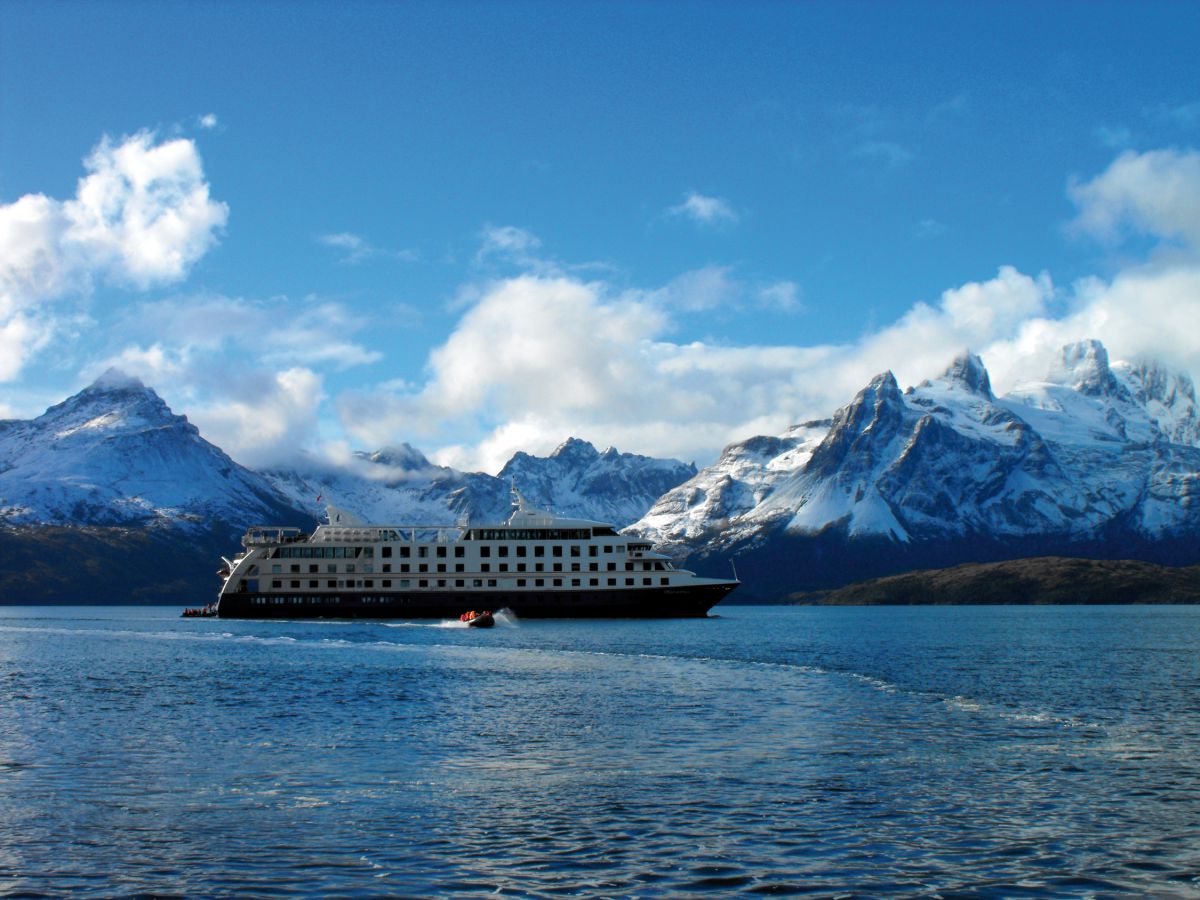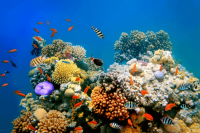The vast region of Patagonia is a perfect vacation for those wanting an unforgettable outdoor adventure. From the stunning fjords and natural parks teeming with wildlife in the south to the glistening lakes with a crystal-blue hue in the north, there’s really no reason everyone shouldn’t have a Patagonia itinerary ready to go.
This stunning region in southern Argentina and Chile is home to some of the most iconic glaciers, snow-capped peaks and miles of pristine coastline. And although it has a reputation for being wild and inhospitable, this part of the continent is exceedingly accessible with the right planning.
Whether you’re a seasoned adventurer or just getting started, planning any vacation can be daunting, especially if it’s for a short two-week period! But don’t worry—we’re here to help! In this post, we’ll share some of our favorite tips to create the perfect Patagonia itinerary for 2 weeks. So read on and get ready to experience some of the most amazing scenery the Earth has to offer!
Patagonia Itinerary Considerations
If you’re not a fan of just jumping on a plane and going wherever life takes you, you’ll want to spend some time creating a meticulous itinerary. However, before you do, there are a few considerations that can determine the direction of your vacation plans.
Consider the Journey
South America in itself is a huge continent with much more than you can explore in a few weeks. However, if you can fit it in, you may want to visit some other areas as you make your way down to Patagonia by creating a more generalized South America itinerary.
For example, while you’re down there, why not make a quick stop at the famous Amazon forest? The forest has a massive 80,000 navigable waterway, making it a perfect destination to explore while on a cruise.
You can add a short one or three-day cruise to your itinerary and encounter exotic wildlife like river dolphins and toucans before you end your Patagonia vacation.
If rainforests aren’t your thing, how about visiting one of coffee’s most famous exporters—Colombia. Colombia is one of the best countries in South America to visit for wildlife enthusiasts. And because of its vast wildlife, the country is teeming with rich, fertile soil that gives its coffee its delicious and recognizable flavor.
From Colombia, you can take a short flight to one of the continent’s most beautiful and vibrant cities, Rio de Janeiro. Snap a selfie with the iconic Christ the Redeemer statue and gaze upon the shining and majestic waters of the Atlantic Ocean.
After spending a day or two in Brazil, you can complete your Patagonia itinerary as you make your way to Argentina and Chile. Even if you only have time to create a short two-week Patagonia itinerary, it never hurts to create a longer South America itinerary for 1 month that you can use at a later time.
Must-sees
When creating your Patagonia itinerary, it’s important to consider your non-negotiable areas of interest or your must-sees. For example, maybe it was the magical Cape Horn and Ushuaia that made you want to visit Patagonia in the first place or maybe it’s an intense desire to say you’ve been to the southernmost city in the world.
Or maybe it’s the frighteningly beautiful glaciers and landscapes teeming with wildlife at Torres del Paine that have you daydreaming about your visit while at work.
Either way, two only two weeks to enjoy Patagonia, it’s highly likely that you won’t have time to visit every single place you have in mind. However, proper planning ensures you’ll have enough time to appreciate some of the most famous landmarks and regions that inspired your visit in the first place.
Are you unsure of where you want to visit or which places should take priority? Check out this list of places that should put Patagonia at the top of your bucket list.
Distance and transport
When you’re on a time crunch and only have a couple of weeks to enjoy the region, you want to measure the distance from one location to the next and note the transportation method.
Patagonia is an extremely large region of the continent, and the only two options for getting around are buses and domestic flights.
Chile
- Flights: International flights that arrive in Chile will land at the Comodoro Arturo Merino Benitez International Airport, also called the Santiago International Airport. From there, Sky and LATAM airlines will fly to either Punta Arenas or Puerto Montt. There are at least two flights a day to Punta Arenas and at least eight flights a day to Puerto Montt.
- Buses: If you don’t want to sit in a cramped airplane again, you can hop on one of the many buses that operate in Chile. However, if you choose the bus route, it’s recommended to book your tickets in advance from the local bus stations in the towns and cities. If you prefer booking your bus tickets online, check out Recorrido and Bus Sur, which can help you identify the best way to get between Punta Arenas and Puerto Natales. These websites can also help you navigate your way to Ushuaia, Rio Gallegos and El Calafate. For the full list of bus companies in Chile, visit Omnilíneas.
Argentina
- Flights: International flights to Argentina land at the Ministro Pistarini International Airport (Ezeiza International Airport, EZL) in Buenos Aires. The main carriers in Argentina are LATAM and Aerolineas Argentinas. These carriers fly at least three times a day to Rio Gallegos, at least five times a day to Ushuaia and at least three times a day to Bariloche and El Calafate.
- Buses: Like Chile, it’s much more common to use buses to get around than domestic flights. Check out Omnilíneas to access an online system to help you navigate bus routes around Argentina.
Time of year
Lastly, when planning your itinerary, you have to consider the time of the year. Typically the best months to travel to Patagonia are between November and April.
During these months, visitors can enjoy warmer weather and seamless tourist infrastructure. Outside of these months, some parts of the tourist infrastructure will shut down.
If you plan on visiting Patagonia to get in some hiking, wildlife observation, photography, camping or kayaking, you’ll want to visit during late fall and early spring.
Those wanting to enjoy winter sports in Patagonia should visit during the winter season between July and August. Winter sports enthusiasts can spend time at the region’s primary resorts like Cerro Castor near Ushuaia, Cerro Perito Moreno near El Bolson and Cerro Catedral in Bariloche.
Patagonia Itinerary One: For the Hikers and Trekkers
- Fly into Punta Arenas from Santiago, then take the bus directly to one of the world’s most famous national parks, Torres del Paine.
- Spend up to four days exploring the park and hiking the W trail as you breathe in the park’s fresh and pure Patagonian air.
- After you finish exploring the park, take a bus to your next destination—El Calafate. Here you can spend a day or two climbing through the crevasses of the Perito Moreno Glacier.
- After your glacier hike, take a short journey to Argentina’s hiking capital—El Chaltén. Here you can spend a few days climbing the highest peak in the Los Glaciares National Park, Monte Fitz Roy. After climbing, relax in town or explore the many hiking trails on the town’s outskirts.
- After enjoying your hiking and rock climbing, take a bus to Punta Arenas to enjoy the maritime history that this Patagonian city has to offer before flying back to either major international airport.
Patagonia Itinerary Two: Wildlife Observation

- From Santiago, take a short flight to Punta Arenas. Here you can board an expedition ship like the Stella Australisand enjoy an eight-day cruise following Darwin’s famed route. The cruise will take you around Cape Horn and through the Beagle Channel.
- During your eight-day cruise, you will visit Magellanic penguin colonies as you make your way past the Magdalena and Tuckers Islets and through the Chilean fjords.
- On this cruise, you’ll also pass through Glacier Alley, visit the southernmost city in the world, Ushuaia and navigate the mythical Cape Horn.
- After your cruise, catch a quick bus ride to Rio Gallegos to spend a few days immersed in the gaucho culture at local estancias (ranches) or fly fishing.
- After a few days, make your way back to Punta Arenas by bus and spend your last couple of days exploring the historical sites and museums around the city, like the Nao Victoria Maritime Museum. This museum is home to a full-sized replica of the HMS Beagle, the ship that brought Charles Darwin down to South America.
- On the last day of your trip, as you fly back to Buenos Aires or Santiago, you can spend your time discovering the vibrant gastronomy of the Chilean capital or the energetic tango scene inthe trendy San Telmo district of Buenos Aires.
Experiencing Patagonia
Patagonia is a land of unparalleled beauty and natural wonders. If you want to explore this breathtaking region, we recommend planning an extended trip that will allow you to see as much as possible.
Of course, if you’re short on time, ensure you make the most of your trip by carefully planning your Patagonia itinerary. Our team at Australis can help you find the perfect cruise for your schedule, specifically tailored for your interests and budget.
Contact us today to book your cruise and see Patagonia at its best.
No comments yet
There are no comments on this post yet.






Leave a comment